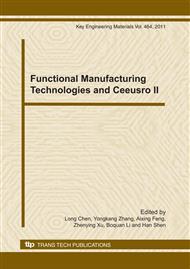p.469
p.474
p.478
p.482
p.487
p.492
p.496
p.501
p.506
Artificial Neural Network versus Similarity Method for Tire Model
Abstract:
Traditionally, similarity method is used to predict the tire forces and moments at the tire/road interface. Because of advances in computer science, students have had an alternative method, the artificial neural net works, to the similarity method. Based on data from a set of experimental available data, we compared the prediction of the similarity model and the neural network model by genetic algorithm. The latter showed a slightly (about 9%, 18%) but significantly better performance. The accuracy of both approaches was low at the population level, but both models may be used to estimate longitudinal and lateral tire tread and sidewall deflections during braking, traction and cornering.
Info:
Periodical:
Pages:
487-491
Citation:
Online since:
January 2011
Authors:
Price:
Сopyright:
© 2011 Trans Tech Publications Ltd. All Rights Reserved
Share:
Citation:


